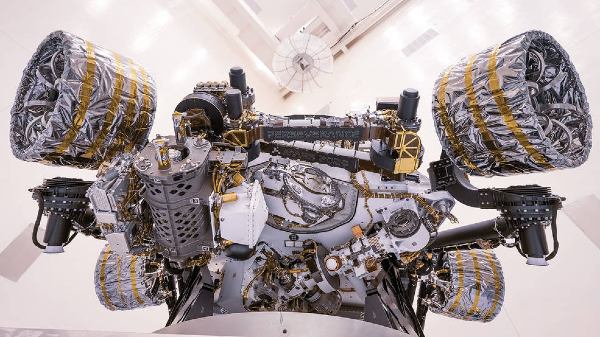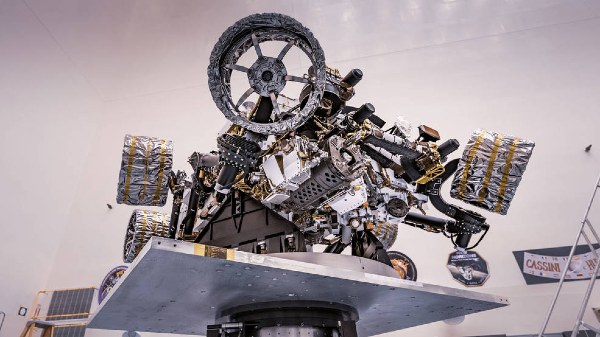Just In
- 53 min ago

- 58 min ago

- 1 hr ago

- 1 hr ago

Don't Miss
- Education
 NIMCET Registration 2024: Application process, Eligibility criteria and more
NIMCET Registration 2024: Application process, Eligibility criteria and more - Finance
 Bharti Hexacom Shares Plunge Following Resignations Of 2 Directors Post IPO Success; Details Inside
Bharti Hexacom Shares Plunge Following Resignations Of 2 Directors Post IPO Success; Details Inside - Movies
 BMCM & Maidaan Box Office Collection Day 4: Akshay’s Film Continues To Lead; THRASHES Maidaan In 1st Weekend
BMCM & Maidaan Box Office Collection Day 4: Akshay’s Film Continues To Lead; THRASHES Maidaan In 1st Weekend - Automobiles
 Mahindra Thar 5-Door Spied Testing Again – Roomier & More Practical Off-Road SUV
Mahindra Thar 5-Door Spied Testing Again – Roomier & More Practical Off-Road SUV - Sports
 IPL 2024: Why was MI coach Kieron Pollard arguing with 4th Umpire during MI vs CSK Match?
IPL 2024: Why was MI coach Kieron Pollard arguing with 4th Umpire during MI vs CSK Match? - News
 21 Retired Judges Urge CJI Chandrachud To Address Attempts To Undermine Judiciary
21 Retired Judges Urge CJI Chandrachud To Address Attempts To Undermine Judiciary - Lifestyle
 Chaitra Navratri 2024 Ashtami And Navami: Confirm Date, Puja Muhurat, And Significance
Chaitra Navratri 2024 Ashtami And Navami: Confirm Date, Puja Muhurat, And Significance - Travel
Maximise Your First Indian Adventure With These Travel Tips
NASA Gearing Up For Mars 2020 Mission Despite COVID-19 Crisis
Despite the coronavirus pandemic, NASA is gearing up for the upcoming Mars mission. With just 13 weeks to go before the launch of the NASA Perseverance rover, the final preparations of the spacecraft continue at the Kennedy Space Center in Florida. NASA noted that the assembling, test, and launch operations team completed a crucial test of the rover.

What Is NASA Perseverance Rover
The Perseverance rover is a robotic scientist weighing about 1,025 kgs set to explore Mars. The rover is equipped to fulfill its mission of searching for signs of past microbial life, characterize the planet's climate and geology, collect samples for future return to Earth, and pave the way for human exploration of the Red Planet.

NASA's blog post notes that the Perseverance rover gets balanced meaning that the Precision mass properties measurements are essential to a safe landing on Mars. They help to ensure that the spacecraft travels accurately throughout its trip to the Red Planet. This includes right from its liftoff, through its entry, descent, and landing on the Red Planet.
NASA notes that that the Mars 2020 mission carrying the Perseverance rover will take off any day between July 17 and August 5. Once liftoff, the rover will land Jezero Crater on February 18, 2021, on Mars. The Mars 2020 Perseverance rover mission itself is part of the larger missions to the Moon and even human exploration to Mars.
Perseverance Rover Gets Balanced
"On April 6, the meticulous three-day process began with Perseverance being lifted onto the rover turnover fixture," NASA said in the blog post. "The team then slowly rotated the rover around its x-axis - an imaginary line that extends through the rover from its tail to its front - to determine its center of gravity (the point at which weight is evenly dispersed on all sides) relative to that axis," the post further explains.

Next, the NASA team moved the Perseverance rover to a spin table, who's surface was on a spherical air bearing that levitated on a thin layer of nitrogen gas. The purpose was to minimize friction affecting the accuracy of the results.
The NASA tests could be better understood with a comparison. For instance, just as an auto mechanic places weights on a car tire's rim to bring it into balance, the Perseverance team analyzed the data and then added 6.27 kgs to the rover's chassis. The result is that Perseverance is within the exact spot mission that the designers intended.
-
99,999
-
1,29,999
-
69,999
-
41,999
-
64,999
-
99,999
-
29,999
-
63,999
-
39,999
-
1,56,900
-
79,900
-
1,39,900
-
1,29,900
-
65,900
-
1,56,900
-
1,30,990
-
76,990
-
16,499
-
30,700
-
12,999
-
3,999
-
2,500
-
3,599
-
8,893
-
13,999
-
32,999
-
9,990
-
14,999
-
12,999
-
12,999












































